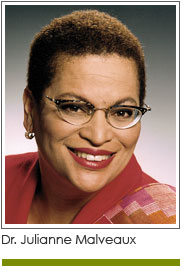 The national support for the victims of last week's Aurora shootings is great. However, if we believe in the equivalency of life, what about the lives of young men in Chicago, where there have been more deaths than in Afghanistan so far this year. While the hospitals in Aurora say they will cover hospital bills for those without insurance (one in three in Colorado), who will cover bills for those who are hospitalized after a drive-by? We mourn some deaths and ignore others, which suggests that some life is valued and some life is cheap.
The national support for the victims of last week's Aurora shootings is great. However, if we believe in the equivalency of life, what about the lives of young men in Chicago, where there have been more deaths than in Afghanistan so far this year. While the hospitals in Aurora say they will cover hospital bills for those without insurance (one in three in Colorado), who will cover bills for those who are hospitalized after a drive-by? We mourn some deaths and ignore others, which suggests that some life is valued and some life is cheap.
Does it have anything to do with media attention? In Tuscaloosa, Alabama, a crazed man walked into a bar looking for "a Black man". He shot a man who did not know him, and with whom he had no beef. He also wounded 17 other people. Why has this story not made national news?
If we spend a minute watching any news, we have heard about Veronica Moser, the 6 year old who was massacred in Aurora. We've seen pictures of her smiling face and of her playing. Certainly we can all mourn the tragedy of her young life being snuffed out by a madman. Still, some young lives are valued, while others are not. One of the young deaths that rocked my soul was the 2004 murder of Chelsea Cromartie, who sat in her grandmother's window playing with her dolls when she was killed by a stray bullet. She wrote, in a classroom exercise, that she was an "amazing girl". We don't have to go back to 2004 to find a child's death. Just last week, Heaven Sutter, who had just had her hair styled for a trip to Disney World, was shot, again, by a stray bullet.
Details of the lives of those who are killed humanizes them and tugs at our heartstrings. In Aurora, we have learned about a man whose wife just gave birth, about another who died saving his girlfriend, of a young woman who missed a Toronto mass murder by a few seconds, aspired to be a sports journalist, and was killed in Aurora. Rarely do we hear about the lives of those who are killed in the inner city, about the lives of Chelsea Cromartie and Heaven Sutter.
The disproportionality of death commentary hits home when one remembers the stories in the New York Times after September 11, 2001. For months, postage stamp sized photos accompanied short but revealing blurbs about those who lost their lives. On one hand, the blurbs were humanizing. For me, though, they were a reminder of the equivalency of life and the lives we choose to ignore.
There were 12,000 gun-related deaths in the United States in 2008. Eighty percent of the gun deaths in the world's 23 richest countries happened in the United States, as did 87 percent of the deaths of children. We have more than 270 million privately owned guns in this country; when we add the number of military (police, sheriffs) guns, there is at least one gun for every man, woman, and child in this country. Some hark their Second Amendment rights in their gun ownership, but the Second Amendment was passed before assault weapons and Glocks. If people have the right to bear arms, perhaps they have to right to have 6000 rounds of ammunition, obtained on the Internet. If we can't limit guns, can we at least regulate the distribution of ammunition?
In the same year that there were 12,000 gun deaths in the United States, there were a scant 11 gun related deaths in Japan. Indeed, while the United States has 90 privately held guns per 100 people, the next largest per capita rate of privately held guns is in Yemen. In contrast, China has 3 guns per 100 people.
The National Rifle Association loves to say, "guns don't kill, people do". As usual, they display limited thinking. People with guns are the ones who kill! Why won't we address that by dealing with issues of gun and ammunition control?
The 12 people who lost their lives represent a fraction of one percent of those who die from gun violence annually. As we mourn these lives, let us mourn the lives of the thousands who were also killed because it is easier to buy a weapon than it is to buy marijuana in most parts of our nation.
Dr. Julianne Malveaux is a noted economist and former president of Bennett College for Women.











